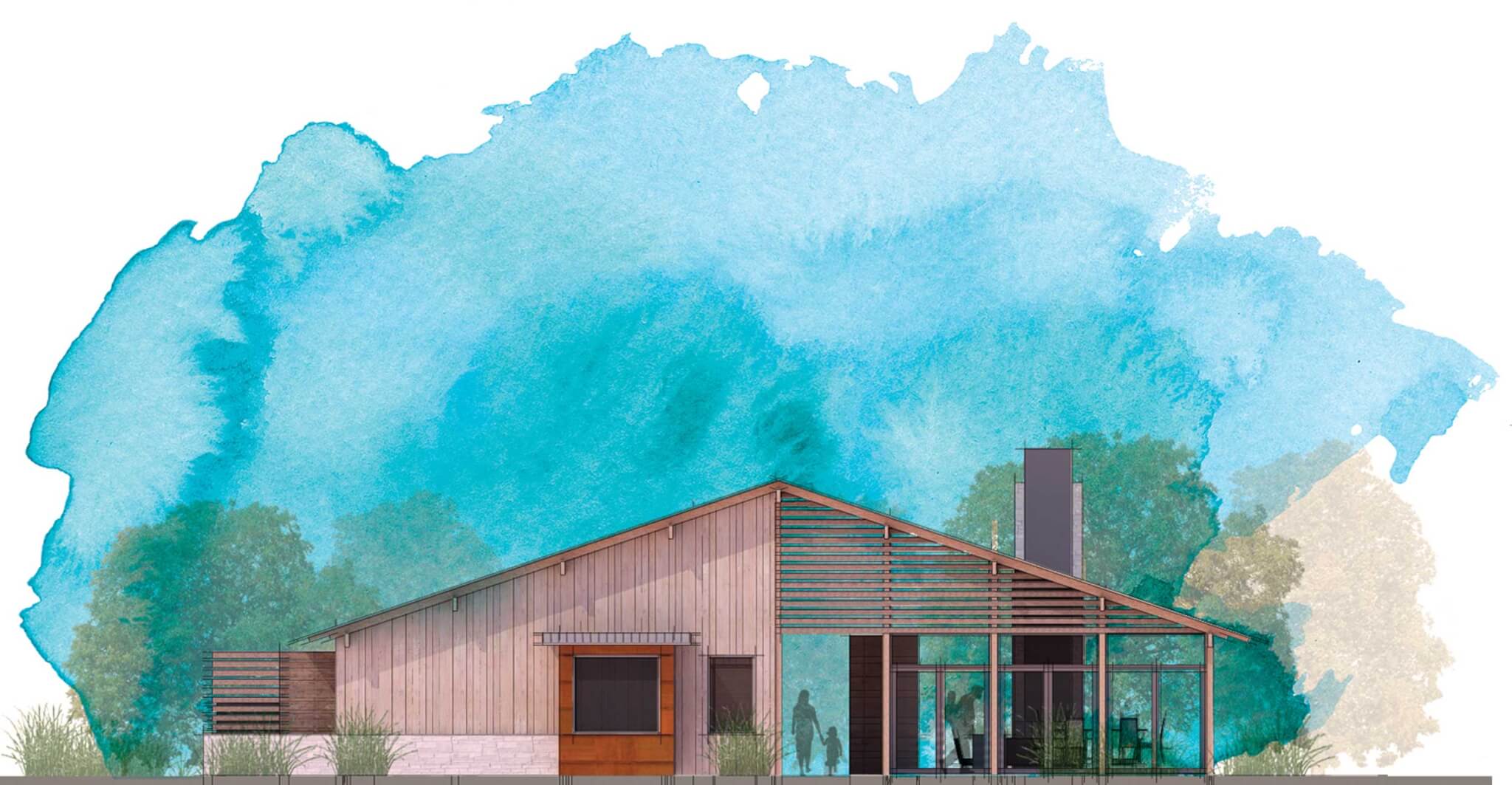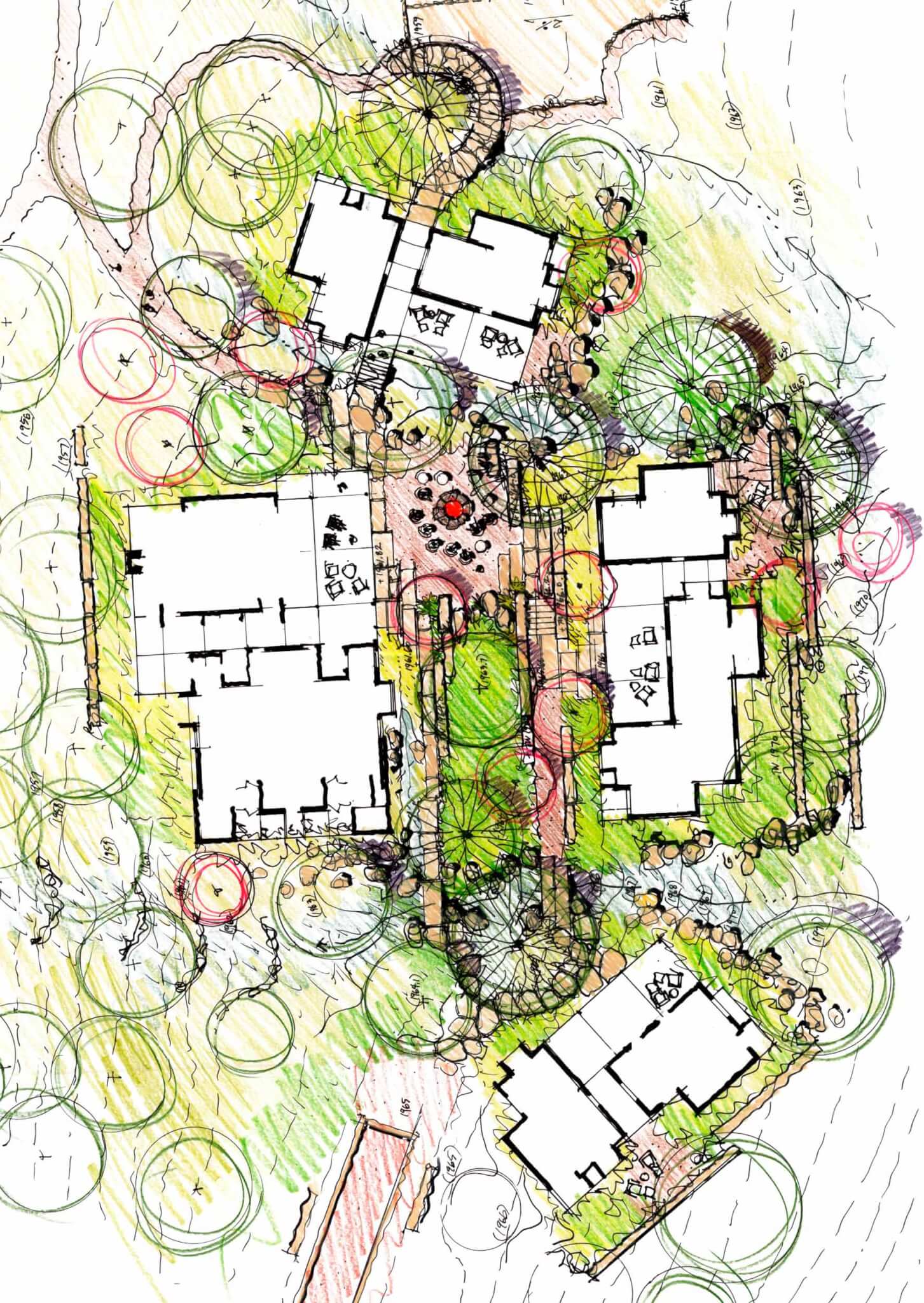
The current building, located just above the main parking lot at Laity Lodge, is tucked behind a dense “brake”—a tightly packed section—of cedar trees. Originally built in 1982 to house staffers, the facility came to serve as overflow housing for retreats.
Today, the Laity Lodge team, led by Executive Director Steven Purcell and Gate Davis, the Lodge’s program director, are working with San Antonio-based architects Overland Partners to replace the existing building with two duplexes, a triplex, and a main meeting room, all anchored around a central courtyard.
Unlike the main Lodge housing arrangements, Cedar Brake is set back from the striking views of the Frio River. John Byrd, architect and project manager, said the lack of proximity from the river was a major consideration in the creative vision for the new complex.
“We had to create a sense of place that wasn’t on the water and wasn’t so defined by the water. It led to compounded buildings instead of singular buildings,” Byrd said. “Although we have architectural details in Cedar Brake that differ from the existing buildings, we studied the richness of the mid-century Hill Country architecture on site to guide us in tying the new and old together.”
When the new facility is complete, it will be available to regular Laity Lodge guests as a third additional housing option, augmenting Black Bluff and the main Lodge rooms.
Cedar Brake is more than a reconstruction. It’s also an opportunity to expand and supplement the concept of Laity Lodge retreats.
For starters, Cedar Brake will allow the Lodge to host “micro-retreats” of fewer than twenty guests at a time. (Standard Lodge retreats can have as many as 75 guests.)
“We frequently get requests from people wanting to bring small groups to Laity Lodge,” says Purcell, “and most of the time we have to turn them away.” Micro-retreats will be more intimate, and their programs may be more focused.
For Gate Davis, micro-retreats at Cedar Brake are a natural outgrowth of the Lodge’s core purpose. “The Lodge seems to represent a place where important conversations can occur. But we have been more intentional to try to gather small groups—six to fifteen people—to take up a specific question or topic together.
“[We] sense that this sort of intentional convening represents an important part of our work in the years ahead,” Davis said.
Groups seeking micro-retreats will apply through Laity Lodge. During these micro-retreats, guests and groups will have various catering options ranging from self-catered retreats to full service and support from the Lodge’s food services staff. On the programming side, the Lodge anticipates developing content for groups who are gathering for very specific purposes, as well as hosting guests who require no programmatic support.
The new Cedar Brake complex will also become the designated housing quarters for the Lodge’s ongoing Artist Residency program. Although the Foundation’s support for artists-in-residence has been a longstanding tradition, and the Lodge has been a valued sanctuary for noted writers like Henri Nouwen and Madeleine L’Engle, the program did not have a dedicated facility. Instead, it housed guests as space was available. The new Cedar Brake will become the physical anchor for the program.
Purcell anticipates broadening this program to include additional thinkers, writers, journalists, theologians, pastors, and other cultural influencers whose work is in line with the core mission of Laity Lodge.
